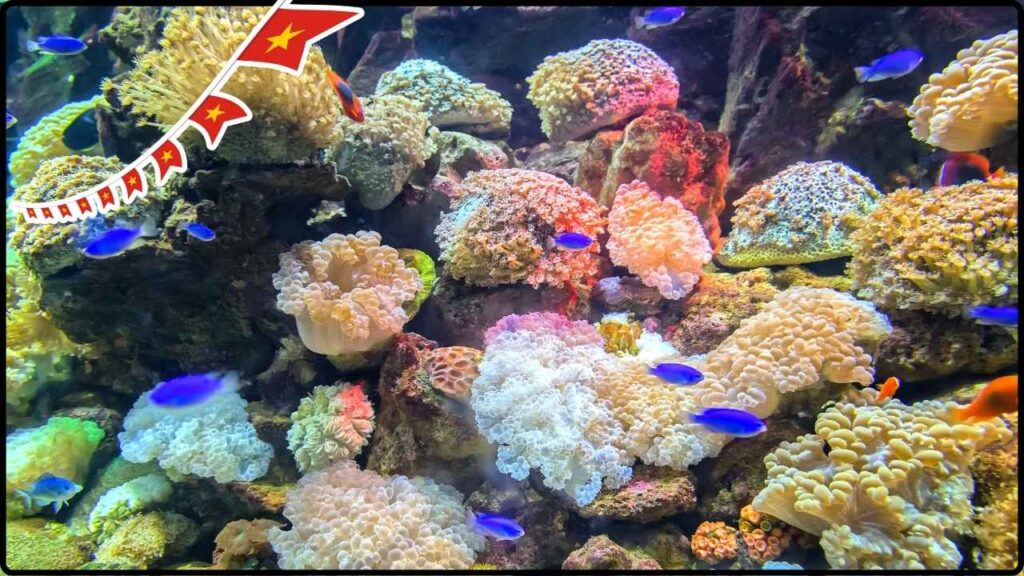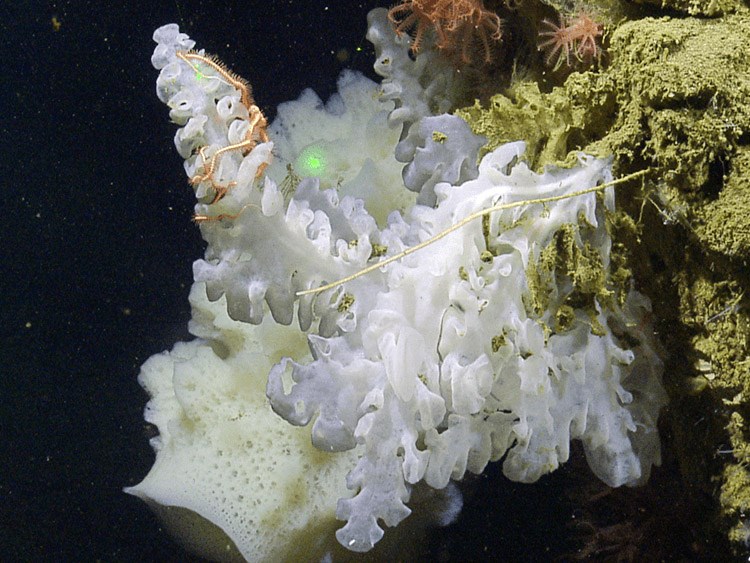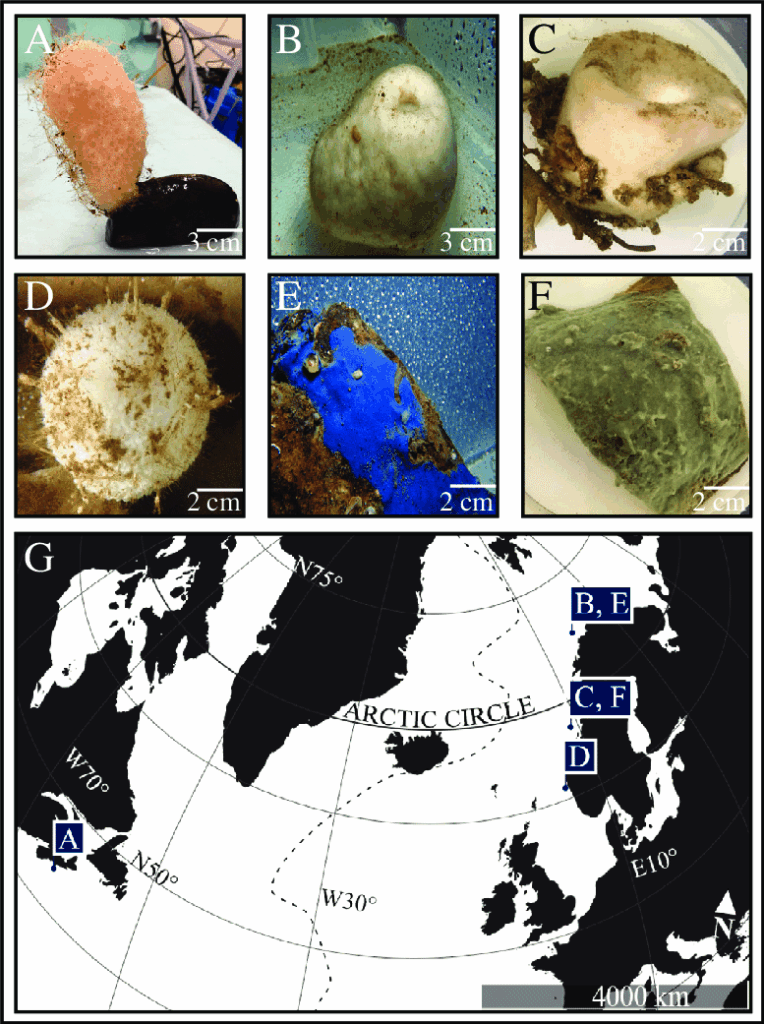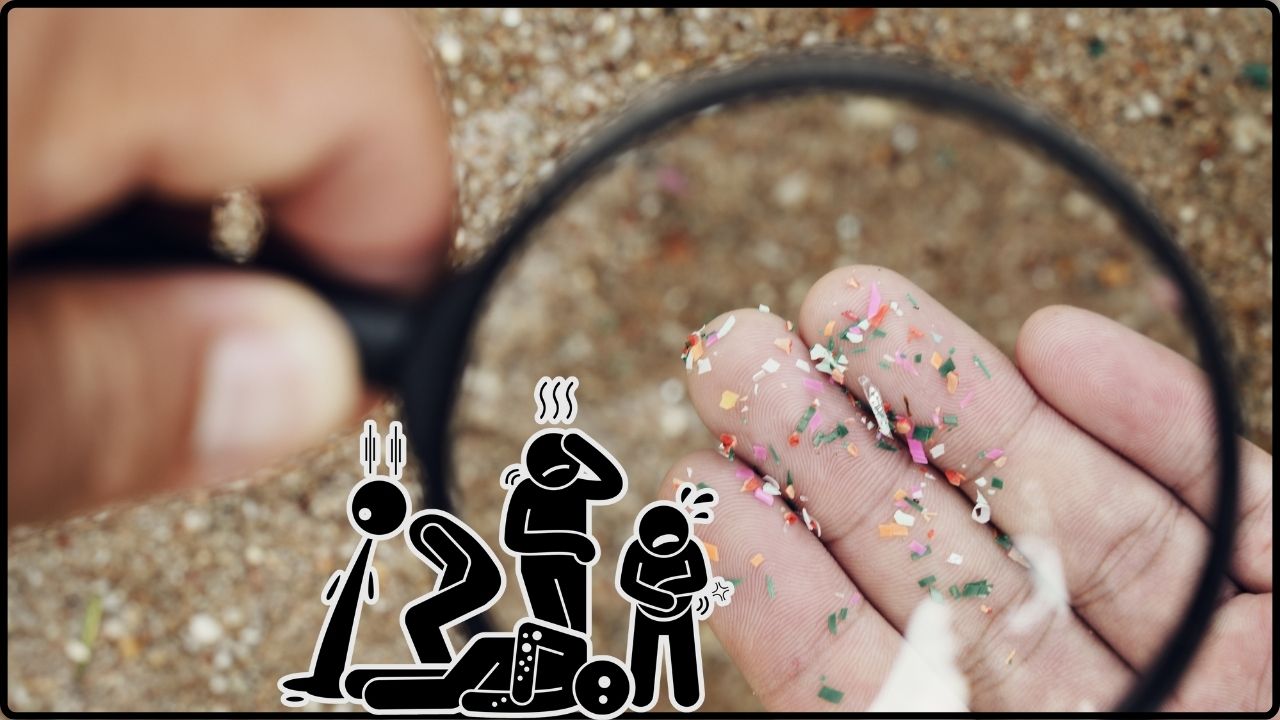Rare New Sponge Species Discovered After Centuries: In an astonishing breakthrough in marine biology, a rare new species of sponge called Cladocroce pansinii has been discovered in the underwater caves of Vietnam’s Ha Long Bay, one of Southeast Asia’s most iconic UNESCO World Heritage Sites. This seemingly simple sponge has remained hidden in the shadows of submerged limestone tunnels for possibly centuries—unseen, unnamed, and unstudied—until now. Thanks to a collaborative effort between Vietnamese, Italian, and Indonesian scientists, this little-known organism is rewriting parts of marine science and reminding us that the ocean still holds plenty of secrets.
Rare New Sponge Species Discovered After Centuries
The discovery of Cladocroce pansinii is a landmark moment in marine biology. It reminds us that the ocean is still full of surprises, even in places we think we know well. As scientists continue to explore Earth’s final frontiers—from deep-sea trenches to underwater caves—discoveries like this show us just how much we have yet to learn. It also emphasizes the urgent need for global marine conservation and the value of interdisciplinary, cross-border research. Whether you’re a student, a policymaker, or just someone who loves the ocean, this new sponge is a beacon of possibility—and a warning not to overlook the quiet corners of the Earth.

| Topic | Details |
|---|---|
| New Species | Cladocroce pansinii, discovered in Ha Long Bay, Vietnam |
| Location | Semi-dark submerged karst tunnels and rocky reef crevices |
| Size & Appearance | Grows up to 20 cm; soft texture; greenish to violet in color |
| Scientific Importance | Corrects decades of species misidentification in Asia-Pacific |
| Named After | Professor Maurizio Pansini, sponge taxonomy expert |
| First Reported | In the Journal of Marine Biodiversity |
| Medical Potential | Under review, but related species have shown medicinal properties |
| Official Reference | UNESCO Ha Long Bay Site |
Why This Sponge Discovery Is Making Waves?
You might be wondering—what’s the big deal about a sponge? After all, aren’t they just sea filters stuck to rocks?
Not quite. Sponges are among the oldest living animals on Earth, dating back over 600 million years. They’re crucial to the health of marine ecosystems, acting as natural water filters, supporting microbial life, and forming habitats for fish and invertebrates. Some species even contain bioactive compounds that lead to medical breakthroughs, including anti-cancer and anti-viral drugs.
So when a new species like Cladocroce pansinii shows up unexpectedly, it’s a big deal for science, conservation, medicine, and even tourism.
Inside the Discovery: How Scientists Found It
The story begins with a team of marine researchers from the Vietnam Academy of Science and Technology, the University of Genoa in Italy, and the Indonesian Institute of Sciences. Their mission was to study the unique biodiversity found within the karst limestone tunnel systems beneath Ha Long Bay—caves partially submerged and rarely explored due to their inaccessibility and low light conditions.
During a dive in 2023, the team noticed soft, branching sponges clinging to underwater rock faces. While these sponges resembled known species from Thailand and even the Hawaiian islands, something about their size, color, and growth pattern raised eyebrows. Samples were collected under strict biodiversity protocols and taken back to the lab.
That’s where things got interesting.

How Scientists Confirmed It Was a New Species?
Identifying a new marine species isn’t as simple as spotting something weird and calling it “new.” It takes a lot of verification—and that’s exactly what this team did.
- Morphological Analysis: Scientists studied the sponge’s external and internal structure under a microscope. They noticed unique arrangements of spicules (tiny skeletal elements inside sponges) that didn’t match known species.
- Genetic Barcoding: DNA sequencing revealed that the sponge’s genetic code didn’t match anything in the GenBank database, which catalogs known genetic sequences of living organisms.
- Taxonomic Review: After cross-checking with records from sponges in Thailand, Indonesia, and the Pacific, researchers realized that previous specimens were misidentified. What was thought to be Cladocroce burapha was actually an entirely new species—Cladocroce pansinii.
What Makes Cladocroce pansinii Unique?
This isn’t your average sea sponge. Here’s what sets this species apart:
- Coloration: Ranges from pale green to yellow-green, with occasional violet or bluish hues.
- Growth Form: Can be branched, tubular, or even lobed, depending on the location and lighting.
- Habitat: Lives in semi-dark, submerged tunnels, which are hard to reach and poorly studied.
- Texture: Soft to touch, but firm enough to resist mild currents—adapted to a low-light, nutrient-rich environment.

Why Rare New Sponge Species Discovered After Centuries Matters for Science and Conservation?
This discovery isn’t just a curiosity—it’s a scientific game changer. Here’s why it’s so important:
1. It Expands Our Knowledge of Biodiversity
Biodiversity in Southeast Asia is incredibly rich, but also under-documented, especially when it comes to marine invertebrates. With this discovery, researchers can now:
- Revise marine biodiversity maps
- Update regional conservation plans
- Launch new studies into poorly understood habitats
2. It Corrects Scientific Records
The sponge helps clarify long-standing taxonomic confusion. Previous studies misidentified similar sponges from Thailand and Hawaii, but C. pansinii sets the record straight.
3. It Highlights Undervalued Habitats
Marine conservation efforts often focus on coral reefs and open water. But this sponge was found in low-light, semi-enclosed underwater caves—places that are often ignored by protection policies. Its discovery proves these environments deserve attention.
4. It Has Biomedical Potential
Sponges are known to produce bioactive compounds with anti-bacterial, anti-inflammatory, and even anti-cancer properties. While no compounds have yet been isolated from C. pansinii, its close relatives have been used in pharmaceutical studies. The discovery opens the door for future research into marine medicine.

Career Impact: Why This Matters for Marine Scientists, Students & Policy Makers
For marine biologists, this discovery validates the importance of international cooperation, fieldwork, and genetic research.
For students, it’s a perfect real-world example of taxonomy, ecology, and the impact of environmental science.
For policymakers and conservation advocates, this is a prime case for expanding marine protected areas (MPAs) to include lesser-known underwater habitats.
Even for those in biotech and pharmaceuticals, this sponge highlights the ocean as a treasure trove of potential discoveries that could revolutionize modern medicine.
Other Recent Sponge Discoveries Around the Globe
To put this in a global context, here are some other notable sponge finds:
- Mediterranean Sea: Researchers found eight new sponge species in deep-sea caves off the Balearic Islands.
- Central Pacific Seamounts: More than 100 new sponge and coral species were identified during an expedition off the coast of Chile.
- Indian Ocean Abyssal Plains: At 4,000 meters deep, glass sponges with unique silica structures were discovered, helping researchers understand how sponges survive extreme environments.
Nature’s Petrifying Secret: Tanzania’s Lake That Mummifies Animals in Its Deadly Waters
This Shocking New Theory of Life Doesn’t Involve Monkeys or Dolphins—And It’s Blowing Minds
Conservation: What You Can Do
Even if you’re not a scientist, here’s how you can make a difference:
- Support Organizations: Donate to groups like WWF or NOAA working to protect marine life.
- Choose Reef-Safe Products: Use eco-friendly sunscreens and biodegradable toiletries.
- Stay Informed: Read science news, follow discoveries, and share updates to raise awareness.











